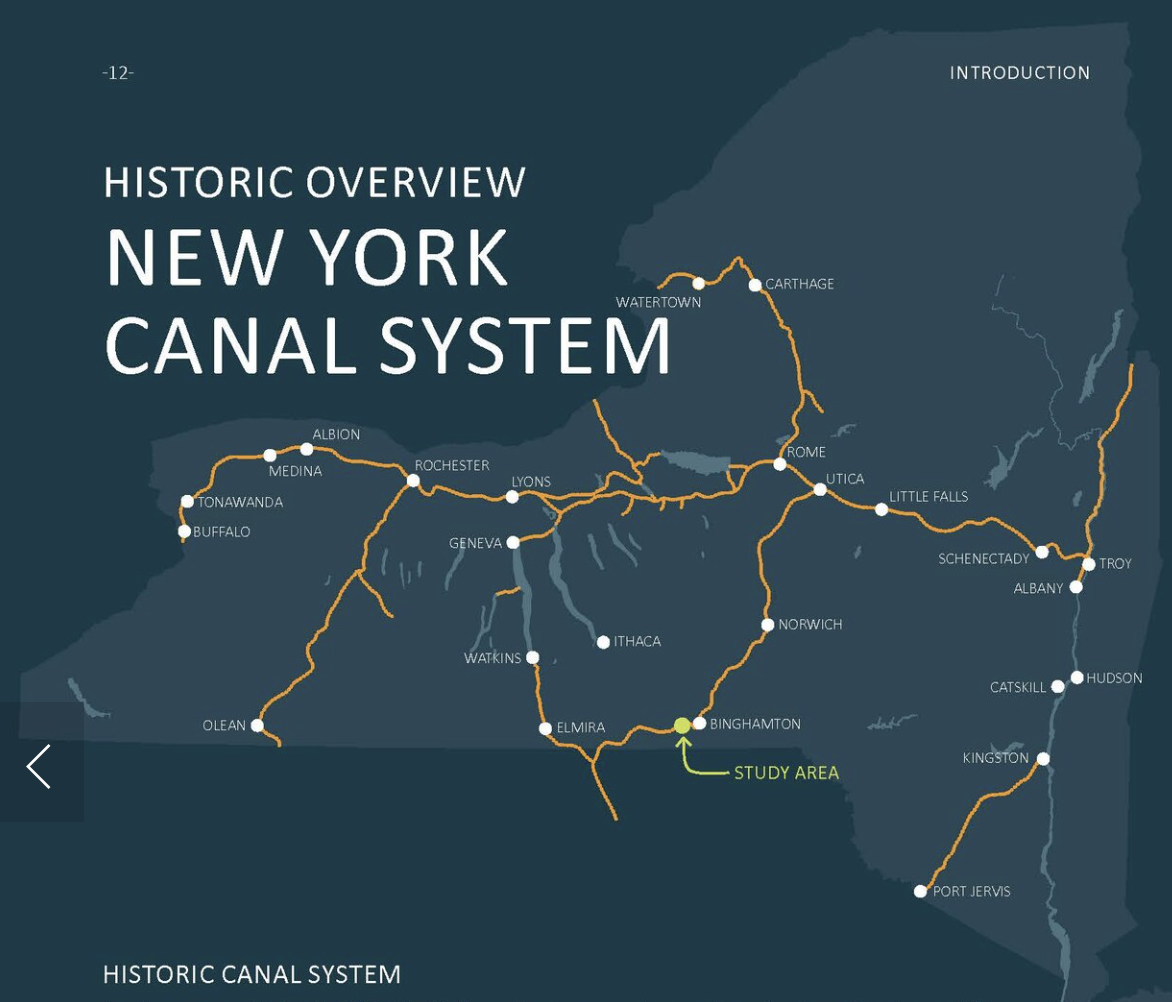
Rivercrest/Chenango Canal
Conservation & Public Benefit Study

Project Summary
This research aimed to evaluate the potential for Conservation Purpose and Public Benefit on a 16-acre tract located along Vestal Parkway and the Susquehanna River in Vestal, New York. The study presents conservation planning and programming strategies that promote responsible and sustainable management of the property’s unique and valuable land and water resources. After the report was completed, the property was donated to the Town of Vestal as a conservation easement.
The process was guided by landscape planning methods that integrate conservation policies with best management practices. The project team examined environmental, social, and economic factors in the surrounding area, including ecosystem services, transportation, infrastructure, population trends, development patterns, and recreational opportunities. The analysis covered existing site conditions, relevant federal codes and standards, various spatial and temporal socio-ecological scales, and conservation-oriented programmatic uses.
Funding Source:
Real Estate Equity Solutions, LLC
Rivercrest/Chenango Canal – A 16‑acre conservation and public-benefit study along the Susquehanna in Vestal, NY, exploring sustainable land- and water-focused stewardship that culminated in a conservation easement donation.
Historic Overview of New York’s Canal System
New York’s canal system, developed largely in the 1820s, dramatically transformed the state’s economy by creating efficient shipping routes like the Erie Canal, completed in 1825. This canal spurred the development of smaller feeder canals, such as the Chenango Canal, which linked Binghamton to Utica and the Erie Canal. In 1838, an extension was planned along the Susquehanna River to connect Binghamton to Pennsylvania’s coal region. Though many canals were later abandoned due to the rise of railroads, remnants like a segment of the Chenango Canal Extension in Vestal still exist. Today, some former canal routes are being repurposed into recreational trails, such as the Erie Canalway and Champlain Canalway trails.


